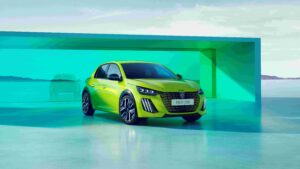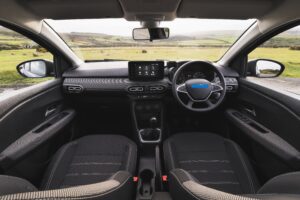Last week we attended the global premiere of the all-new Polestar 3 in Copenhagen and here’s what we found out.
First of all, the power. The Polestar 3 is the first all-electric performance SUV produced by the brand and as such launches with a rear biassed dual-motor arrangement that creates (standard car) 360kW of power and 840Nm of torque, but for those wanting a little extra, there’s also an optional performance pack, that delivers 380kW and 910Nm. 0-100km/h is said to be 5 seconds (4.7 with performance pack) and it boasts a top speed of 210 km/h.
Continuing with the power theme, the Polestar 3’s 400V lithium-ion, 111kWh battery pack provides a driving range of up to 610km (WLTP), has a DC charging capacity of up to 250kW (11kW AC) and is also equipped for bidirectional charging, so can be used as a power source too.
The above numbers are obviously impressive enough, but as Polestar CEO Thomas Ingenlath emphasised, they are just a small part of the story.
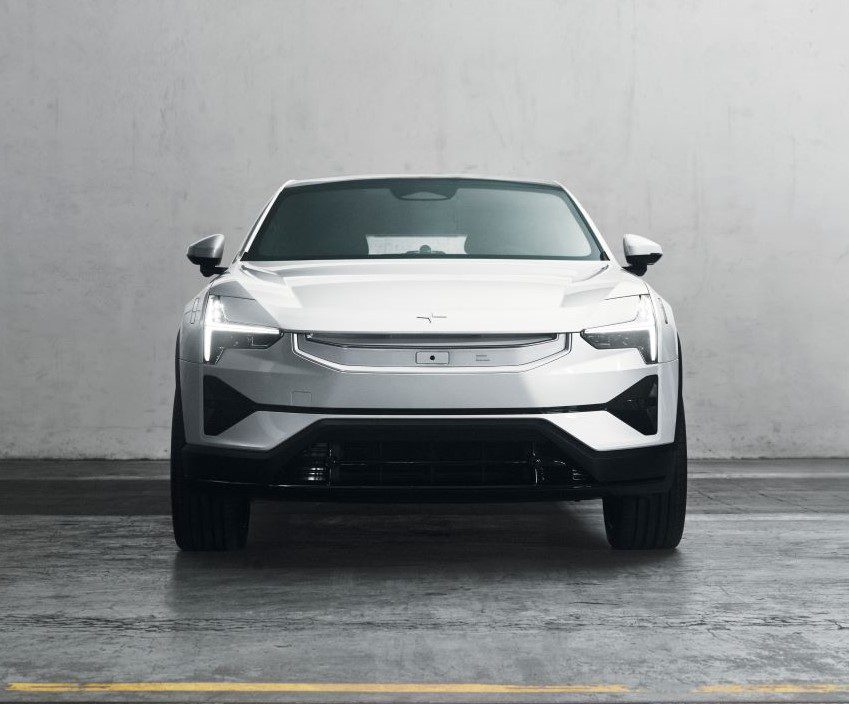
Ingeniath said that the Polestar 3 is a very important step for the company as it defines the very heart of the brand in terms of size, luxury, ambition and design. Unlike its predecessors, It was designed from day one as a Polestar, so has allowed them to expand their unique brand offerings, including what an SUV should look like.
“Everybody loves SUVs, you get in and out easily, you have a great overview from inside and you feel cool driving them. But SUVs can be bad too, they drink too much, people think they are dangerous and some of them look aggressive,” said Ingenlath.
So by ‘keeping the good and getting rid of the bad’ Polestar 3, ‘the SUV for the electric age’, was created.
In terms of overall architecture, they began by placing the large battery low down between the wheels, and to help create a large interior space, they stretched out the wheelbase too. The space between the first and second row seats has been increased, offering generous amounts of legroom and are tilted to a ‘sports car’ inspired position which allowed them to lower the roofline and create a more aerodynamic ‘fast’ silhouette.
With the Polestar 3, they have preserved the stance, ground clearance and high seating position of a traditional SUV but combined this with an athletic and aerodynamic roofline while maintaining a luxurious, spacious and airy cabin.
To further explain the reasoning behind what the new Polestar 3 has on offer, Ingeniath wanted to ‘take electrification as a given’ and concentrate on what really matters, what the SUV gives to you, how and what you feel when you drive it, live with it and use it, and what a sensation it is to own it – and for this he equated the key Polestar 3 features to our five human senses, beginning with sound.

He said that one of the reasons people enjoy driving cars is that they can be alone, relax and listen to THEIR music (maybe even sing along). So in conjunction with audio brand Bowers and Wilkins they have created the most amazing sound system possible for Polestar 3. Twenty five speakers fill the cabin with an immersive surround sound set up (plus there are three more outside to let pedestrians know there is an EV approaching), that are driven by a 28-channel amplifier producing a total system output of 1,750 watts with Dolby Atmos.
Smell, or in fact, lack thereof. According to reports, ambient air pollution is the cause of millions of premature deaths globally each year, so Polestar have made an extra effort to ensure the air you breathe in Polestar 3 is clean and healthy. In association with CabinAir, there is a three-stage filtration system that completely exchanges the 3,000 litres of the SUV’s cabin air every minute, ensuring that you breathe fresh and oxygen rich air.
Feel, and more importantly, feel safe. The Polestar 3 is the first car from the brand to feature centralised computing with the NVIDIA DRIVE core computer, running software from Volvo Cars. This AI brain processes data from the car’s multiple sensors and cameras to enable advanced driver-assistance safety features and driver monitoring.
There are also interior radar sensors that can detect sub-millimetre movements in the interior of the car, to help protect against accidentally leaving children or pets inside. This system is also linked to the climate control system to avoid heat stroke or hypothermia.

On top of this, there are up to 10 airbags mounted around the cabin ready to keep you safe should you get into an accident and next year, Lidar will become an option for those wishing to head down the autonomous driving route.
The Polestar 3 ‘feels’ and drives like a Polestar should, with excellent handling and great control and taking the sport in SUV seriously. The centre of gravity is 100mm lower than compared to an ICE SUV, the load distribution between the two axles is virtually 50/50 and as seen in Polestar 1, the 3 has torque vectoring which controls the torque distributed between the right and left rear wheel individually, improving agility at low speed and stability at high speed.
Polestar 3 comes with air suspension as standard which automatically changes ride height depending on speed and it also comes with active dampers that switch between comfort and performance every 2 milliseconds, meaning that at a speed of 90km, the suspension updates and adjusts every 5cm of road.
The most important sense is sight and that is why design is the most important pillar for the Polestar 3. To explain this, Ingenlath handed over to design director Maximilian Missoni.
“The Polestar 3 looks capable like an SUV but also feels like a true performance car.” he said. “It combines the best of both worlds and lets these qualities exist in the same dimension.”
Ground clearance of upto 25cm and huge 22-inch wheels speak to the ultimate SUV architecture. Electrification allowed them to create ideal proportions and they made sure they used them.
Functional features like door handles and windows are flush against the surface like the fuselage of a plane, it reduces drag and gives the SUV its modern look, but with this aeronautic inspiration they also gave the Polestar 3 wings.
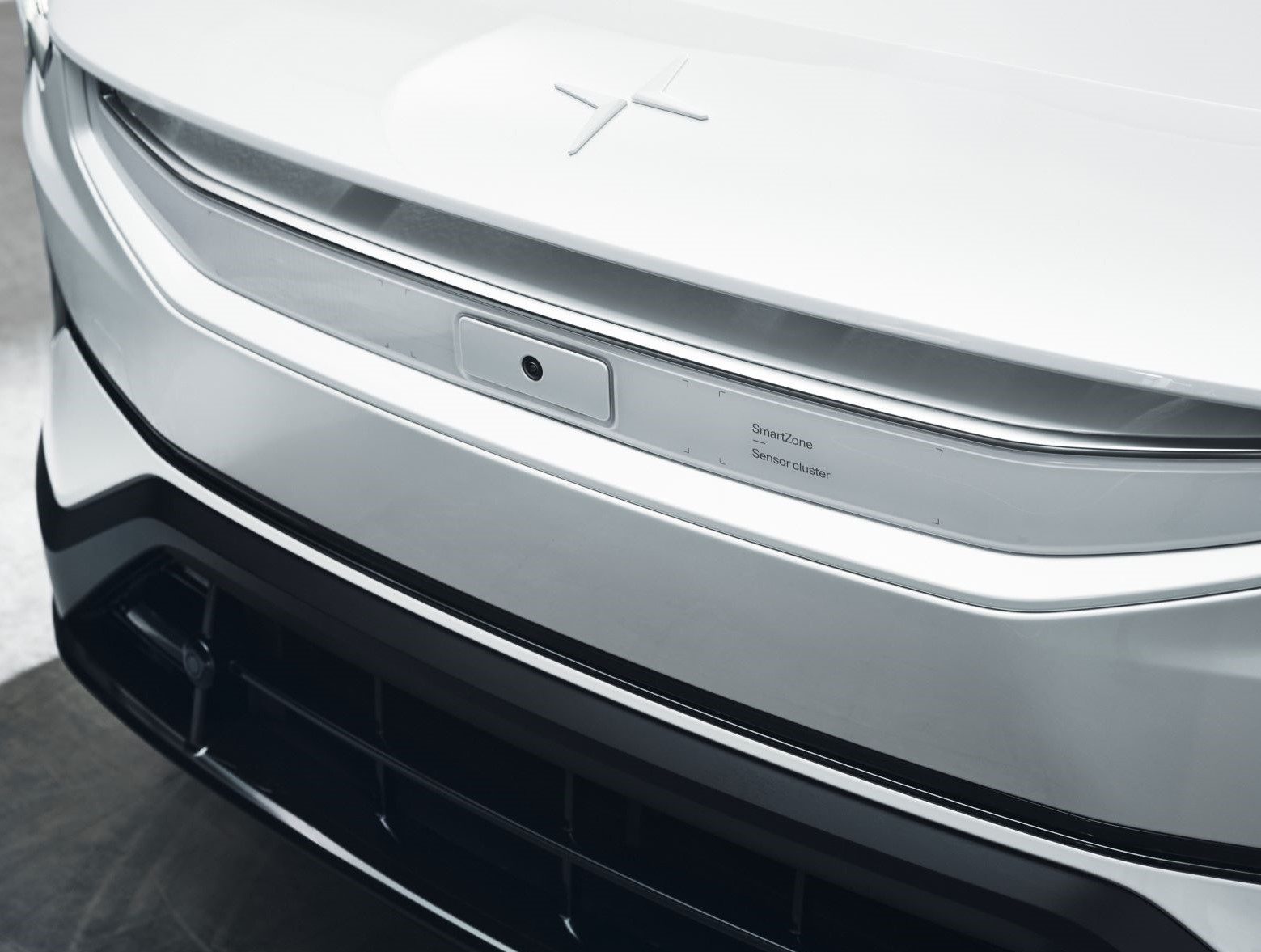
An inverted aerofoil (or wing) on the bonnet sucks down the defected air and directs this to a second wing on the rear to reduce turbulence behind the SUV, reducing drag (0.296 Cd) and therefore giving more real world range.
Polestar’s dual blade lights create the brand’s unique signature and with the 3, 1.3million individually controlled mirrors cast a high definition light beam on the road. Up to eight objects can be detected and ‘blacked out’ so as not to dazzle while offering uncompromised nighttime vision.
With grilles being unnecessary for EVs, Polestar has changed the focus from breathing to seeing, with the introduction of SmartZone. Located below the front aero wing, SmartZone is a collection of forward-facing sensors, a heated radar module and camera, and now becomes a signature of Polestar design.

Inside, two closed-loop driver monitoring cameras bring leading eye tracking technology from Smart Eye to a Polestar for the first time, geared towards safer driving. The cameras monitor the driver’s eyes and can trigger warning messages, sounds and even an emergency stop function when detecting a distracted, drowsy or disconnected driver.
The Polestar 3’s signature rear light bar features 168 individual LEDs inspired by the pulse of light when a star is born. Sensors around the SUV locate the key in your pocket and initiate a welcome sequence, including unlocking and comfort lights.
Continuing on the space theme, Missoni believes that space is the new luxury and the new electric technology base shared with Volvo allows the Polestar to maximise interior space and have created a modern and lightweight interior.
Materials used inside Polestar 3 have been selected for their sustainability credentials, while raising premium aesthetics and luxury tactility. These include bio-attributed MicroTech, animal welfare-certified leather and fully traceable wool upholsteries.
“Together with Google, we have the chance to build an infotainment system starting with a blank sheet of paper to avoid the usual complexity. Polestar 2 customers appreciated the easy to android infotainment system with the best navigation and voice control in the industry, now we are taking this success story to the next level.”
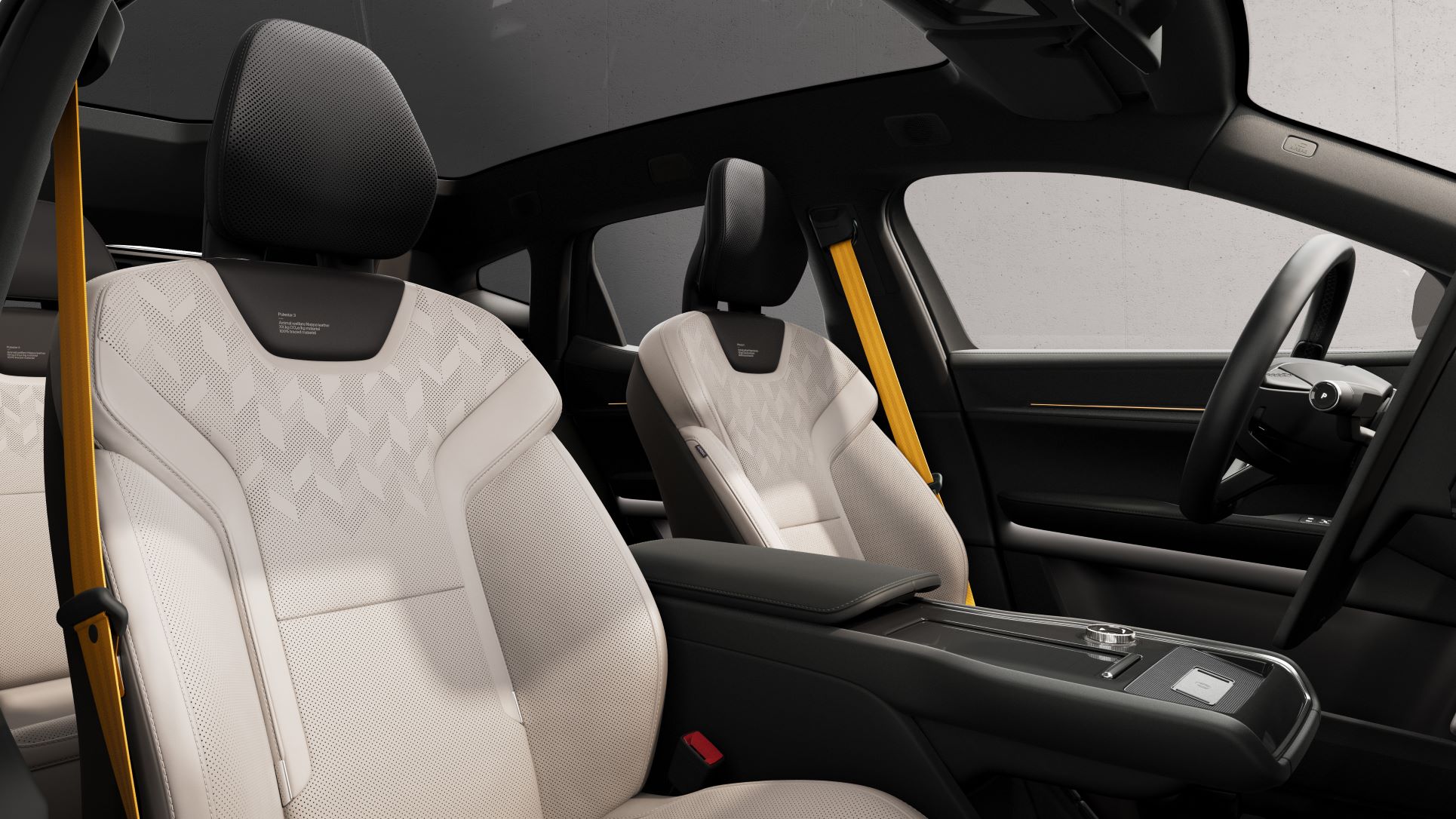
The infotainment system is powered by a next-generation Snapdragon Cockpit Platform from Qualcomm Technologies, Inc. As a central component of the Snapdragon Digital Chassis – a comprehensive set of open and scalable cloud-connected automotive platforms – the Snapdragon Cockpit Platform will be utilised to provide immersive in-vehicle experiences with its high-performance capabilities to deliver high-definition displays, premium quality surround sound and seamless connectivity throughout the vehicle.
And finally taste, good taste that is. Ingenlath believes that all interaction with the brand, albeit website or showrooms should be tasteful and of course the design of the Polestar 3 makes for exquisite taste – it is the SUV of the electric age after all.
Polestar 3 dimensions – Length 4.9m, Height 1.63m, Width incl. Mirrors, 2.12m, Wheelbase 2.98m, Ground clearance 211 mm, Kerb weight 2,584-2,670 kg. Front storage compartment 32L, Rear luggage capacity 484L (seats up). Towing capacity (braked) 2,200 kg.
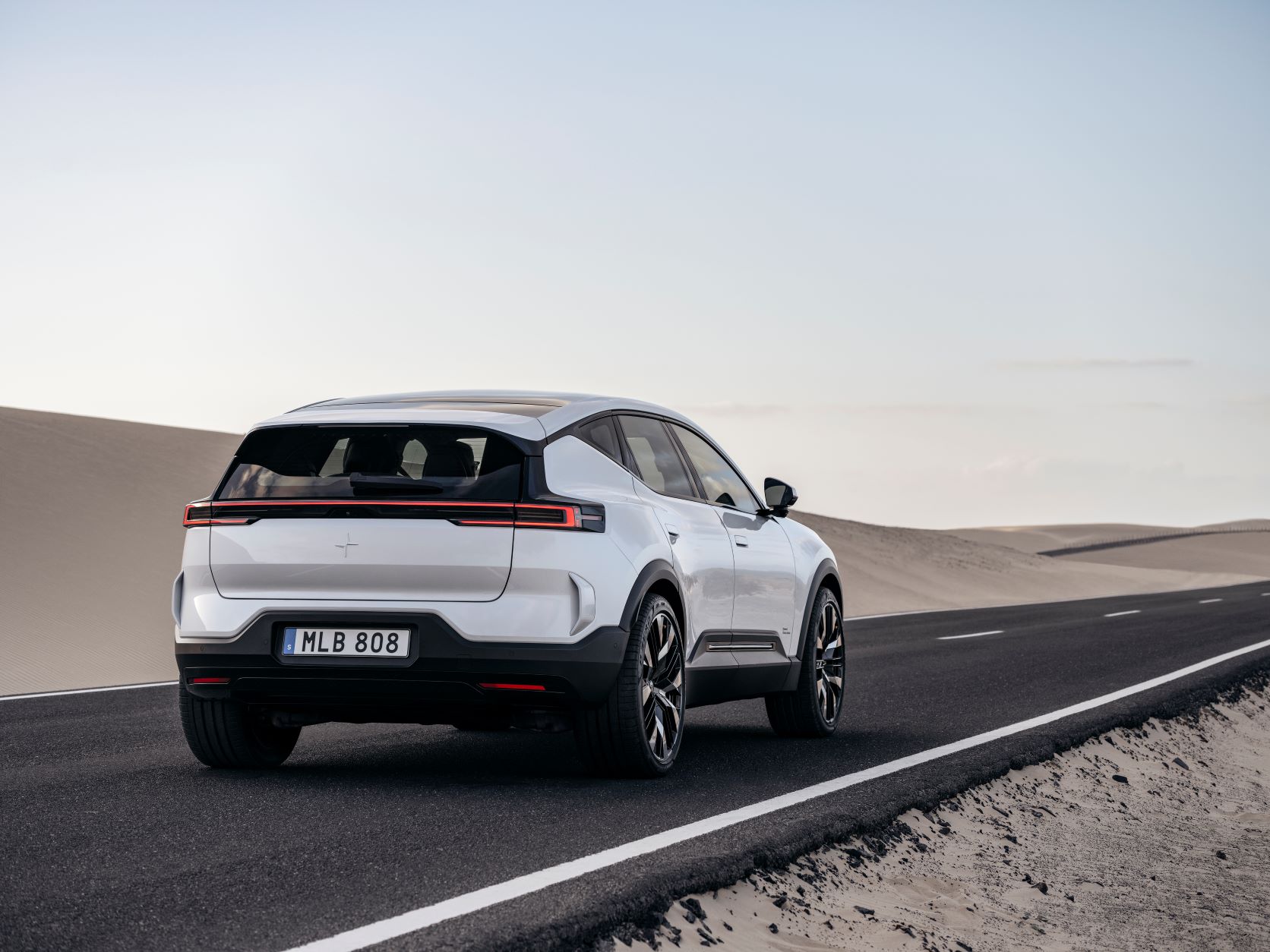
Indicative launch price EUR 89,900. Currently to be produced in China, however, by 2024 the Polestar 3 is expected to be built on two continents, Chengdu China and Ridgeville South Carolina, USA.





